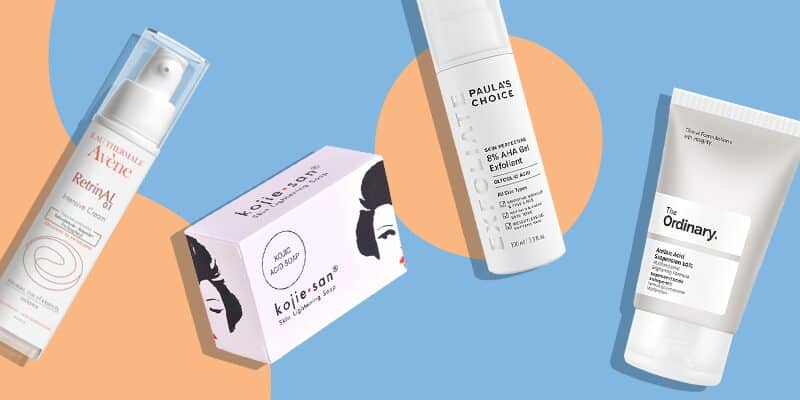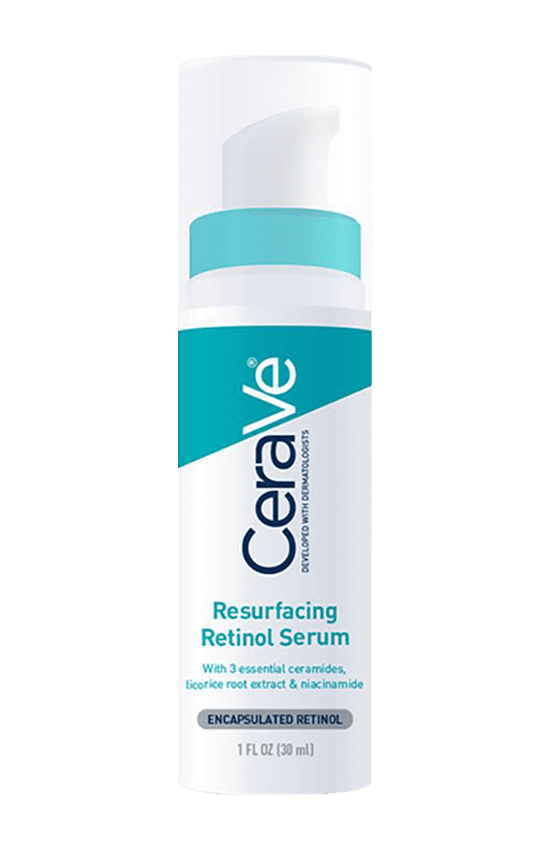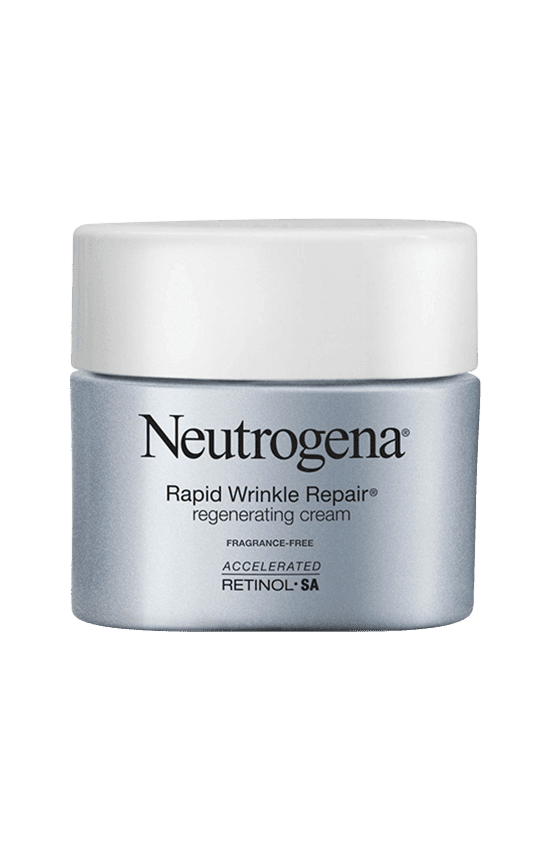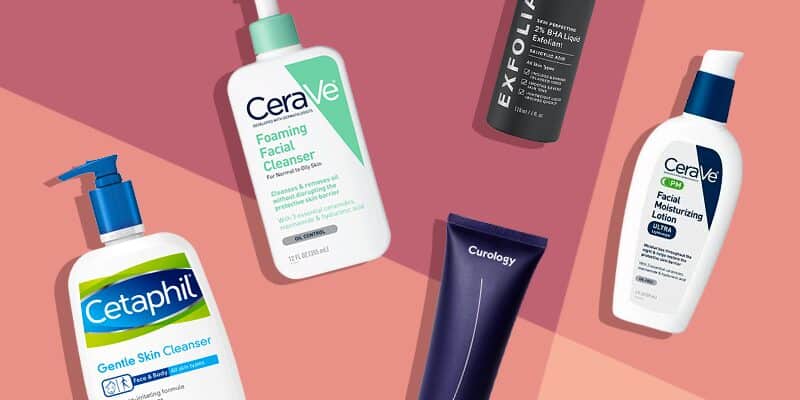Hyperpigmentation is a nuisance that is often tricky to get rid of. For many, lightening creams could provide really great results.
Read on to learn about the best skin lightening creams for hyperpigmentation, as well as the causes and types of hyperpigmentation.
What is Hyperpigmentation?
Hyperpigmentation refers to a darkening of the skin in a certain spot due to an increase in melanin (which creates the color). Melanin is produced by melanocytes, a type of skin cell that can be triggered to produce an excess of melanin to protect the skin. The most common forms of hyperpigmentation are post-inflammatory hyperpigmentation, sun spots, and melasma.
1. Post-Inflammatory Hyperpigmentation (Dark Spots)
Post-inflammatory hyperpigmentation refers to a dark spot that develops at the site of previous inflammation. Acne is a common cause of this type of hyperpigmentation. “Think of it as getting a sunburn that turns into a suntan,” says Dr. Tsippora Shainhouse, a Beverly Hills-based board-certified dermatologist. “When there is trauma and inflammation in the skin, like sun exposure, the body rushes to produce pigment to try to protect itself.”
“Lighter skin types tend to get purple-ish patches that can fade within weeks,” explains Dr. Shainhouse. “Darker skin types can have patches that last for months to years, because they have so much baseline pigment available.”
These spots typically can fade on their own within 4 to 24 months. However, their appearance can be dramatically reduced more quickly with the use of serums or creams (we’ll go over some options below). There are also some professional treatment options.
2. Sun Spots
As you can probably guess from the name, sun spots are typically caused by sun damage. Sun spots are also referred to as solar lentigines, senile lentigines, or simply age spots. Dr. Shainhouse explains that they typically develop with age, as well as with frequent unprotected sun exposure. “Unlike freckles, these spots can actually have a bit of texture to them,” she says.
While post-inflammatory hyperpigmentation can fade on its own, sun spots are usually more permanent. “Unfortunately, unless you do something about them, age spots don't go away,” says Dr. Anthony Youn, board-certified plastic surgeon and author of Playing God. “Giving them time will only make them compound, so if you have spots, I recommend actively getting rid of them via creams or IPL.”
3. Melasma
These spots are caused by hormonal changes, and most often will develop during pregnancy. “Hormones (estrogen and progesterone) activate tyrosinase to induce melanin production by the melanocytes in the skin, which is then retained both superficially and deeper in the skin,” says Dr. Shainhouse. Most commonly, they’ll appear on the stomach and face, although they can appear anywhere on the body.
Like with sun spots, melasma can be tricky to fade. “It does not always fade with time and can actually get darker with exposure to the sun,” explains Dr. Shainhouse. She advises that certain serums and creams can help fade melasma, as can professional treatments.
How to Get Rid of Hyperpigmentation (At-Home)
If you are looking to get rid of hyperpigmentation at home, there are a few ingredients you should search for when analyzing the best skin lightening creams for hyperpigmentation.
- “My favorite products include ingredients such as hydroquinone, retinoids, glycolic acid, and vitamin C,” says Dr. Susan Bard, a New York City-based board-certified dermatologist. “Ingredients such as glycolic acid and retinoids can help exfoliate and further fade the marks. Hydroquinone can decrease pigment production by over-activated pigment producing cells.”
- “I recommend products that contain kojic acid, retinol, licorice root extract, and niacinamide,” adds Dr. Youn. “These are very safe options to brighten the skin and reduce age spots.”
It is important to take note of the type of hyperpigmentation you are dealing with when treating spots at home. Post-inflammatory hyperpigmentation is the most likely to fade with the use of one of lightening creams for hyperpigmentation at home. Those with melasma and sun spots may also be able to fade spots with creams or serums.
However, professional treatments may yield quicker and more effective results. Generally speaking, it will take at least a few months for hyperpigmentation to fade. Some will see results sooner, and some may need professional treatments to fully get rid of hyperpigmentation.
6 Best Skin Lightening Creams for Hyperpigmentation
If you are looking to take the at-home route, these are some of the best skin lightening creams for hyperpigmentation.
1. Mad Hippie Vitamin C Serum
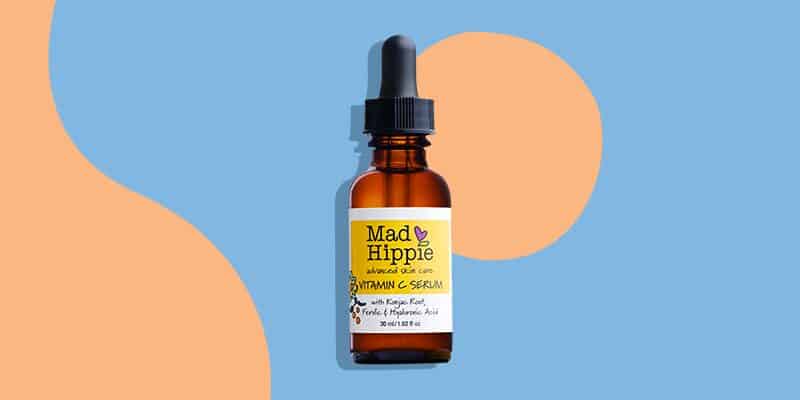
Best for: hyperpigmentation (dark spots)
Vitamin C is a powerful antioxidant that offers a host of brightening benefits. It can be particularly useful in reducing the appearance of post-inflammatory hyperpigmentation. This serum combines vitamin C with konjac root, ferulic acid, and hyaluronic acid to provide a hydrating, softening, smoothing, and anti-aging punch. This makes it one of the best skin lightening creams for hyperpigmentation, as well as one of the best serums for general skin health. It is all natural, vegan, and cruelty-free.
How to Use: Cleanse and dry your skin. Dispense the product onto your fingers and gently massage into the skin. Follow up with a moisturizer. Use at night.
2. Paula’s Choice Skin Perfecting 8% AHA Gel Exfoliant
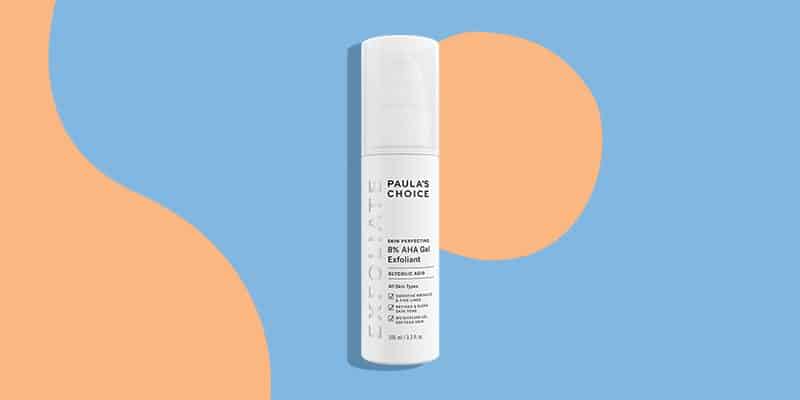
Best for: hyperpigmentation (dark spots)
This gel serum has a high concentration of exfoliating glycolic acid, making it a great choice for those looking to reduce the appearance of hyperpigmentation. It removes the top layer of dead skin to reveal refreshed skin underneath. The gel has a lightweight texture that absorbs quickly. This serum can also help you fight the visible signs of aging.
How to Use: Cleanse and dry the skin. Massage the product into your skin. Follow up with a moisturizer. You may apply it day or night. Finish off with a sunscreen during the day.
3. The Ordinary Azelaic Acid Suspension 10%
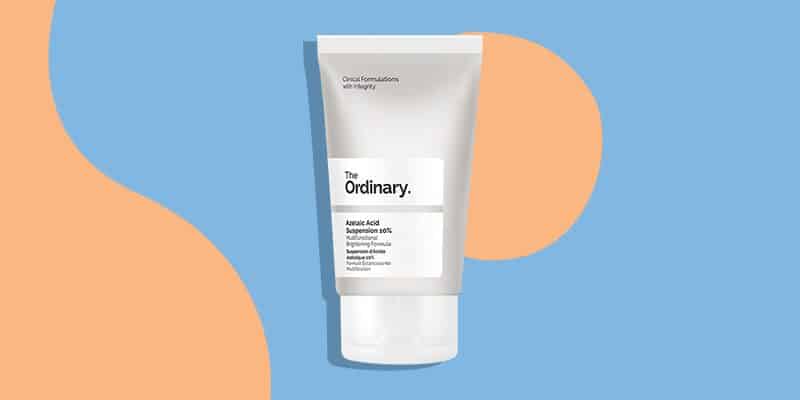
Best for: hyperpigmentation (dark spots), melasma
Dr. Shainhouse recommends this product for those dealing with melasma or post-inflammatory hyperpigmentation. Azelaic acid speeds up cell turnover rate, meaning it helps even out the skin’s texture. This cream-gel product from The Ordinary has a 10% concentration. It is safe and effective to use with active ingredients like vitamin C, so it can be used in conjunction with other products to treat hyperpigmentation.
How to Use: Cleanse and dry your skin. You may want to start with another serum, such as a vitamin C or exfoliating product. Dispense the product into your hands, and then gently massage into your skin. Follow up with a moisturizer. You can use this product 1 to 2 times daily.
4. Eau Thermale Avene RetrinAL 0.1 Intensive Cream
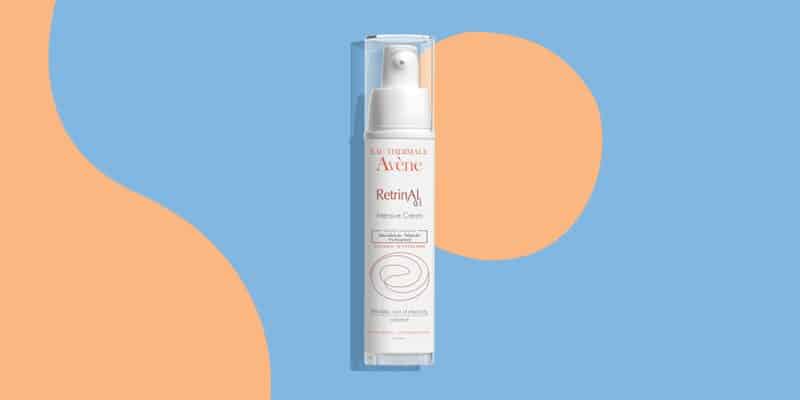
Best for: hyperpigmentation (dark spots), sunspots
This retinol cream has a high concentration of vitamin A, making it an excellent choice for those looking to treat hyperpigmentation. It also hydrates the skin and provides antioxidant protection from harmful free radicals. The formula is paraben-free, fragrance-free, hypoallergenic, and non-comedogenic.
How to Use: Cleanse and dry your skin. Dispense the product into your hands, and then gently massage into your skin. Follow up with a moisturizer. Use this product in the evening.
5. Kojie San Kojic Acid Soap
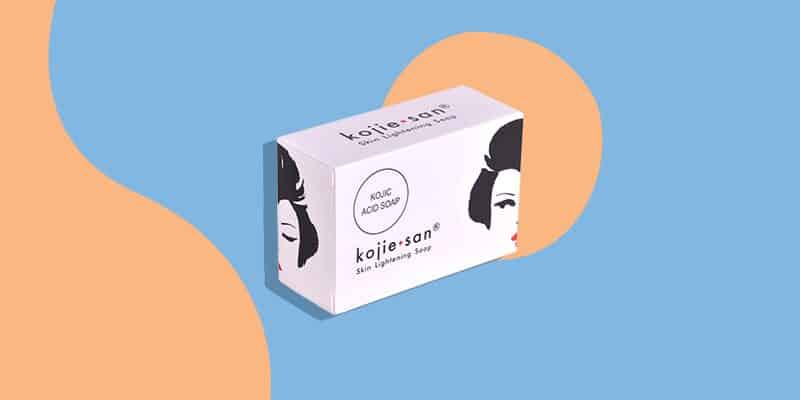
Best for: hyperpigmentation (dark spots), sun spots
Kojic acid is great for brightening and lightening the skin. This soap bar contains high grade cosmetic all natural kojic acid, making it an excellent choice for those looking to reduce hyperpigmentation. It also contains coconut oil, tea tree oil, and Irish moss.
How to Use: Wet the skin. Lather up the soap, and work into the skin. Use this product 1 to 2 times daily.
6. Paula’s Choice Triple-Action Dark Spot Eraser 7% AHA Lotion
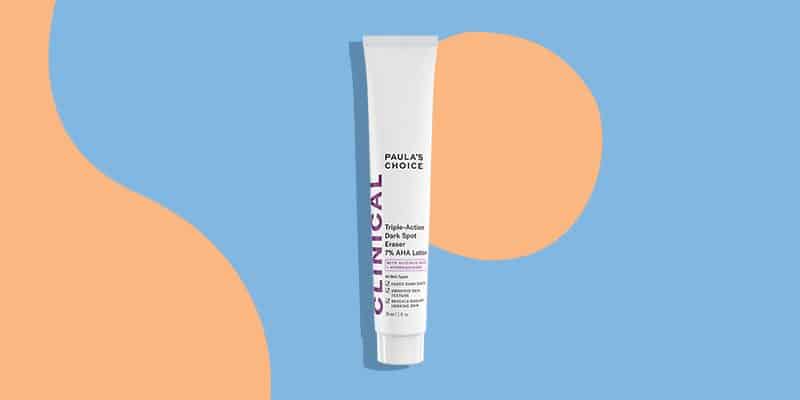
Best for: sun spots
This treatment lotion contains 2 hyperpigmentation-reducing ingredients: hydroquinone and alpha-hydroxy acids. They work together to create one of the skin lightening creams for hyperpigmentation. The hydroquinone works to lighten the skin, while AHAs (including glycolic and lactic acid) work by exfoliating the skin to reveal fresh skin underneath. Additionally, the lotion contains antioxidants that nurture the skin.
How to Use: Cleanse and dry the skin. Apply the lotion to any area of the skin where hyperpigmentation is present. Follow up with a moisturizer to fight dryness. Use at night.
How to Get Rid of Hyperpigmentation (Professionally)
For those with more severe hyperpigmentation, there are a few professional treatments to try. Of course, every person’s unique needs will vary. You should talk to your dermatologist to determine which (if any) treatment would work best for your hyperpigmentation.
- Laser Therapy - Laser treatments use a monochromatic light source to treat the skin. Dr. Shainhouse particularly recommends the Q-switched Nd:YAG laser for treating sun spots. “[It] is the best and safest option to safely target superficial and deeper pigment in the skin,” she says. “It offers quick, hot, specific pulses without burning surrounding skin.” A single treatment may be sufficient, although some patients might need multiple sessions.
- Intense Pulsed Light - Intense Pulsed Light uses a broadband pulsed light source. These flashes of light work to break down the pigment in the skin. “The easiest treatment is to undergo IPL treatments in a medspa or doctor’s office,” says Dr. Youn. This type of treatment is best for those with lighter skin tones. It may require multiple treatments.
- Chemical Peels - With a chemical peel, a strong chemical solution is used to deeply exfoliate the skin. There are varying strength levels, and more intense peels involve the skin peeling off in the days after treatment. “These can help to lift off the top layers of skin cells, and if the pigment is superficial enough, the spot can peel off,” explains Dr. Shainhouse.
FAQs
What cream is best for hyperpigmentation?
Those looking to reduce their hyperpigmentation should look for creams and serums containing hydroquinone, retinoids, glycolic acid, vitamin C, kojic acid, and/or niacinamide.
How long does hyperpigmentation take to fade?
Without treatment, post-inflammatory hyperpigmentation can take anywhere from 4 to 24 months to fade. Typically, sun spots and melasma don’t fade on their own.
Does exfoliation get rid of hyperpigmentation?
Chemical exfoliants (such as products containing glycolic or lactic acid) may help reduce the appearance of hyperpigmentation.
Summary: 6 Best Skin Lightening Creams for Hyperpigmentation
- Mad Hippie Vitamin C Serum (Hyperpigmentation - Dark Spots)
- Paula’s Choice Skin Perfecting 8% AHA Gel Exfoliant (Hyperpigmentation - Dark Spots)
- The Ordinary Azelaic Acid Suspension 10% (Hyperpigmentation - Dark Spots, Melasma)
- Eau Thermale Avene RetrinAL 0.1 Intensive Cream (Hyperpigmentation - Dark Spots, sun spots)
- Kojie San Kojic Acid Soap (Hyperpigmentation - Dark Spots, sun spots)
- Paula’s Choice Triple-Action Dark Spot Eraser 7% AHA Lotion (Best for: sunspots)
The Bottom Line
There are 3 primary forms of hyperpigmentation: post-inflammatory hyperpigmentation, melasma, and sun spots.
The best skin lightening creams for hyperpigmentation will include hydroquinone, retinoids, glycolic acid, vitamin C, kojic acid, and/or niacinamide. Those who prefer professional treatments over using skin lightening creams for hyperpigmentation can try IPL, laser therapy, and chemical peels.
